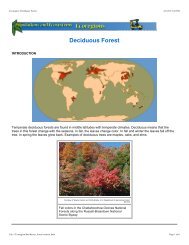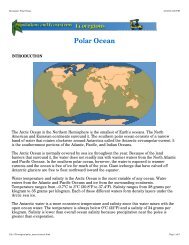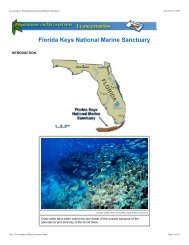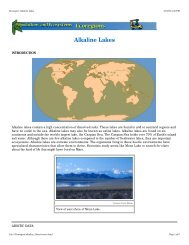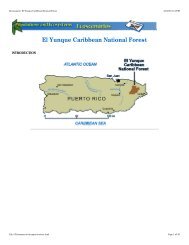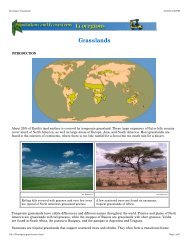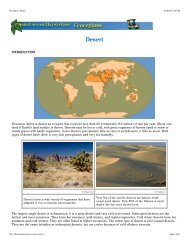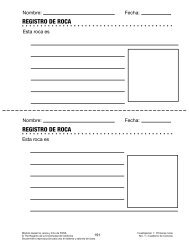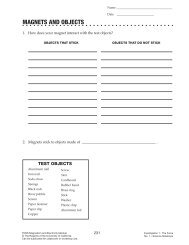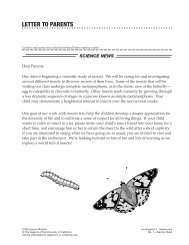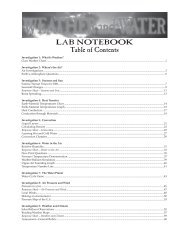Ecoscenarios Combined - FOSSweb
Ecoscenarios Combined - FOSSweb
Ecoscenarios Combined - FOSSweb
You also want an ePaper? Increase the reach of your titles
YUMPU automatically turns print PDFs into web optimized ePapers that Google loves.
Ecoscenario: Monongahela National Forest<br />
4/16/03 3:20 PM<br />
Elevation varies considerably in Monongahela National Forest. The lowest elevation is 275 meters (902 feet) at<br />
Petersburg. The highest peak is Spruce Knob, with an elevation of 1482 meters (4861 ft.).<br />
The soil and substrate in Monongahela National Forest is a deep layer of organic material formed from decaying leaves<br />
and wood.<br />
BIOTIC DATA<br />
Forests, including the deciduous forest at Monongahela, have layers. The canopy layer, includes the tops of the tallest<br />
trees. Below that is a layer of saplings and small trees. The shrub and herb layer is closer to the ground and is<br />
sometimes called the understory. On the forest floor is the ground layer, covered in the shortest plants and leaf litter.<br />
Art Explosion<br />
The understory of the deciduous forest contains<br />
mosses, ferns, lichens, and herbaceous plants.<br />
Courtesy of U.S. Department of Agriculture, Forest Service<br />
Springs and small streams throughout the<br />
forest keep the forest floor moist.<br />
In Monongahela National Forest there are 75 species of trees, including the sugar maple. This canopy tree stands 21–30<br />
meters (70–100 feet) tall. In the trees live many species of birds. Over 230 species, including robins, woodcocks, and wild<br />
turkeys, are known to live in the forest, either year-round or during migrations. The trees with birds also harbor squirrels,<br />
file:///Ecoscenario/mononga/content.html<br />
Page 5 of 11



